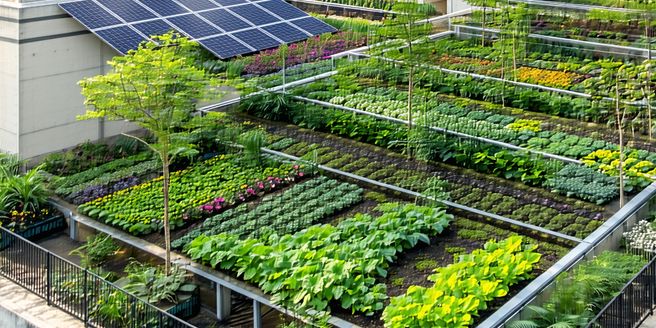
Understanding the Urban Heat Island Effect
The Urban Heat Island (UHI) effect occurs when urban areas become significantly warmer than their rural surroundings. This is largely due to human activities, dense infrastructure, and limited vegetation, all of which contribute to heat retention. During the day, roads and buildings absorb solar energy and release it as heat during the night, raising local temperatures. This effect can lead to increased energy consumption as cities strive to cool buildings. UHI also exacerbates air pollution levels and can pose health risks to urban residents, especially during heatwaves. Addressing UHI requires innovative approaches such as increasing urban greenery and implementing reflective building materials. Understanding UHI is essential for developing strategic actions to mitigate its effects and improve urban living conditions.
Innovative Green Roofing Techniques
Green roofing is an increasingly popular solution for combating urban heat and offers numerous environmental benefits. By covering rooftops with vegetation, green roofs reduce building temperatures through natural insulation and evapotranspiration effects. This innovative technique not only lessens the Urban Heat Island effect but also improves air quality and provides stormwater management. Modern green roofs are designed with lightweight soil medium and drought-resistant plants, making them suitable for various climates. They can significantly lower energy costs by keeping buildings cooler in summer and warmer in winter. In addition to lowering utility bills, green roofs create habitats for wildlife and enhance urban aesthetics. Municipalities and building owners are encouraged to incorporate green rooftops into urban planning as a sustainable way to address climate challenges.
Harnessing Cool Pavement Technologies
Cool pavement technologies are advancing rapidly, offering effective solutions to mitigate the Urban Heat Island effect. These technologies involve using reflective materials and coatings that absorb less heat, helping to lower surface and ambient temperatures. By decreasing heat absorption, cool pavements contribute to reducing energy consumption in urban areas. They can be implemented in roads, sidewalks, and parking lots, providing cities with a practical method to combat heat and improve air quality. Cool pavements enhance pedestrian comfort and contribute to reducing greenhouse gas emissions. Research and development in this field continue to yield innovative materials with improved durability and environmental benefits. Local governments are increasingly adopting cool pavement projects as part of broader sustainability initiatives to create cooler, more resilient urban environments.
Urban Tree Planting and Its Benefits
Urban tree planting is a vital strategy for ameliorating the Urban Heat Island effect. Trees provide shade, lowering surface and air temperatures through evapotranspiration. Increasing the urban canopy cover can significantly cool city streets and reduce reliance on air conditioning. Trees improve air quality by absorbing pollutants and releasing oxygen, enhancing the overall urban environment. Moreover, they offer habitats for urban wildlife and contribute to the mental well-being of residents by providing green, tranquil spaces. Urban forestry initiatives are being prioritized by cities to combat climate change and promote public health. Strategic planting, alongside community involvement, ensures long-term success in managing urban heat. It is crucial for policymakers to integrate tree planting into urban planning to foster sustainable and livable cities.
Smart Building Design for Heat Reduction
Smart building design plays a crucial role in mitigating the Urban Heat Island effect through energy-efficient architecture. By leveraging advanced materials and technologies, buildings can minimize heat gain and optimize energy use. Techniques such as reflective roofing, high-performance insulation, and dynamic glass are central to reducing indoor temperatures and enhancing occupant comfort. Utilizing natural ventilation and shading systems further decreases the reliance on air conditioning. Smart designs integrate sustainable practices like solar energy harnessing and rainwater collection, further contributing to environmental conservation. Modern architecture embraces these strategies to foster buildings that are resilient to climate impacts. Encouraging the development of energy-efficient designs is essential for reducing carbon footprints and creating healthier urban spaces.
Community Awareness and Engagement Strategies
Community awareness and engagement are pivotal in addressing the Urban Heat Island effect. Educating residents on heat mitigation practices empowers individuals to contribute to broader urban cooling efforts. Outreach programs and workshops can inform communities about the advantages of green roofs, cool pavements, and tree planting. Active engagement fosters a sense of collective responsibility and encourages participation in local initiatives. Communities can be involved in urban planning processes, ensuring their needs and ideas are considered. Collaboration between local governments, organizations, and residents is essential for creating effective solutions. By raising awareness and providing resources, cities can enhance public understanding and spur action towards sustainable urban development. Engaging communities leads to resilient urban environments, better equipped to handle climate challenges.
